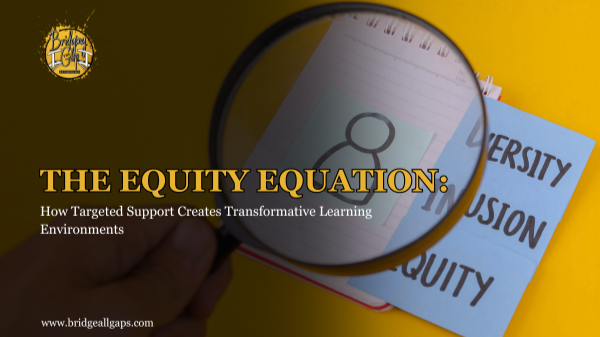The Equity Equation: How Targeted Support Creates Transformative Learning Environments
Education leaders across the country continue to confront a central question: How can schools create conditions where every student has a real chance to grow? This question has become more urgent as classrooms serve students with wide variations in background, access, and readiness. The answer begins with a clear understanding of equity.
Equity is often mistaken for equal treatment. Equal schedules. Equal rules. Equal expectations. While uniform approaches may appear fair, they can overlook the needs that shape a student’s ability to learn. Transformative education does not come from identical treatment. It comes from an informed commitment to provide support that matches the needs of each learner.
A growing body of research shows that students thrive when schools adopt responsive, student centered practices. These practices acknowledge the effects of culture, language, family structure, and community conditions on learning. They also help educators identify the barriers that limit participation, engagement, and confidence. When leaders take time to understand these factors, they are better prepared to design programs and environments that reduce gaps and expand opportunity.
The work of equity begins with clarity. Schools must examine their data, instructional models, discipline patterns, teacher capacity, and family engagement processes. Patterns often reveal groups of students who are consistently underserved. These findings are not signs of failure. They are signposts for strategic action.
Transformative education grows through intentional steps taken by leaders, teachers, and staff members. These steps include building culturally responsive classrooms, supporting social and emotional skills, strengthening teacher training, and creating programs that reflect the realities of the community. When educators feel prepared to recognize student needs instead of responding through routine, they create conditions that help students feel valued and capable.
Schools that commit to equity often witness meaningful shifts. Students show stronger engagement when they feel understood. Teachers report greater confidence when they have practical tools. Families express trust when their experiences and cultures are respected. These outcomes are not accidental. They are the result of systems built with purpose and awareness.
The equity equation is simple in design yet profound in impact: When students receive what they need to succeed, schools become places where potential can take root. Transformative education grows from this foundation. It is not a single program or policy. It is a continuous effort to ensure that learning environments support the whole child.
As districts continue to shape their priorities for the coming years, equity must remain central. When schools commit to this work, they move closer to a future where every child experiences learning that uplifts, strengthens, and prepares them for opportunities that reach far beyond the classroom.

